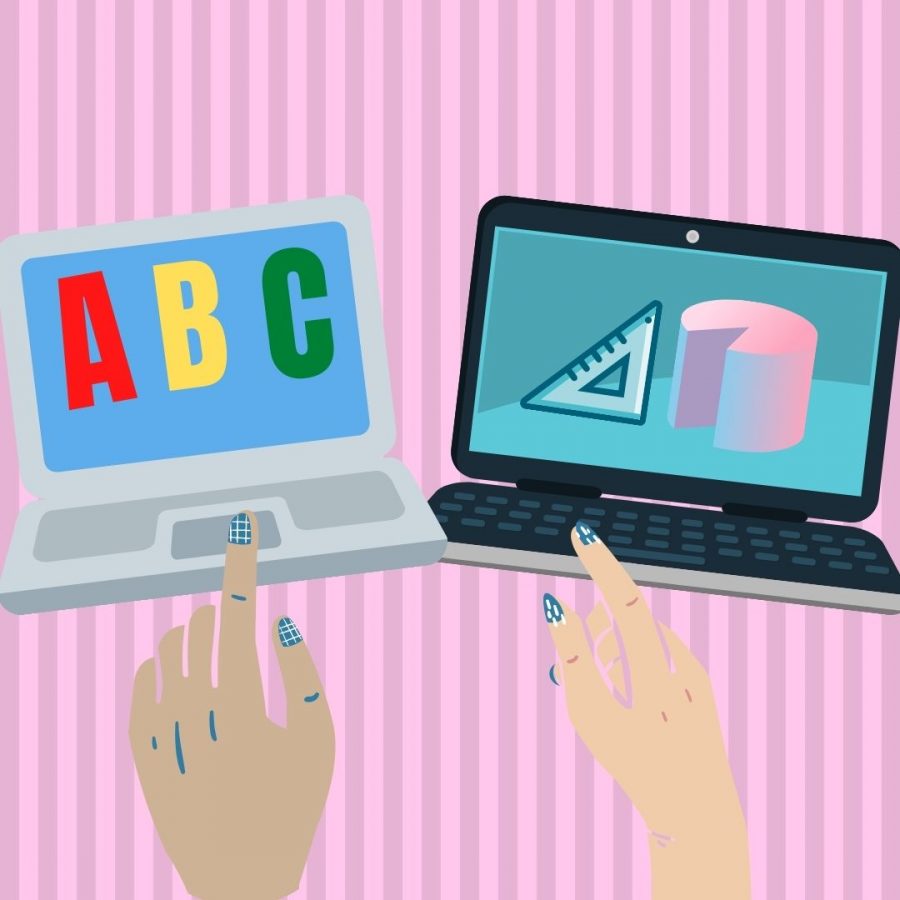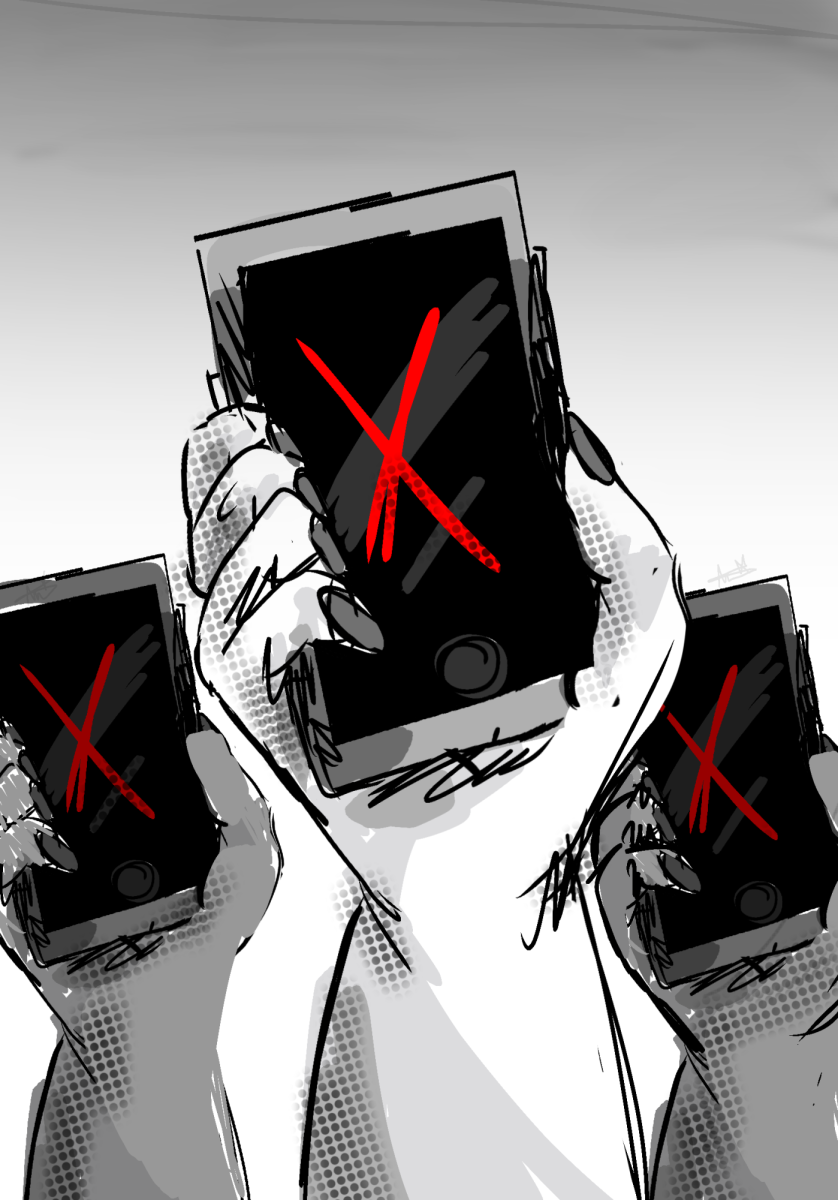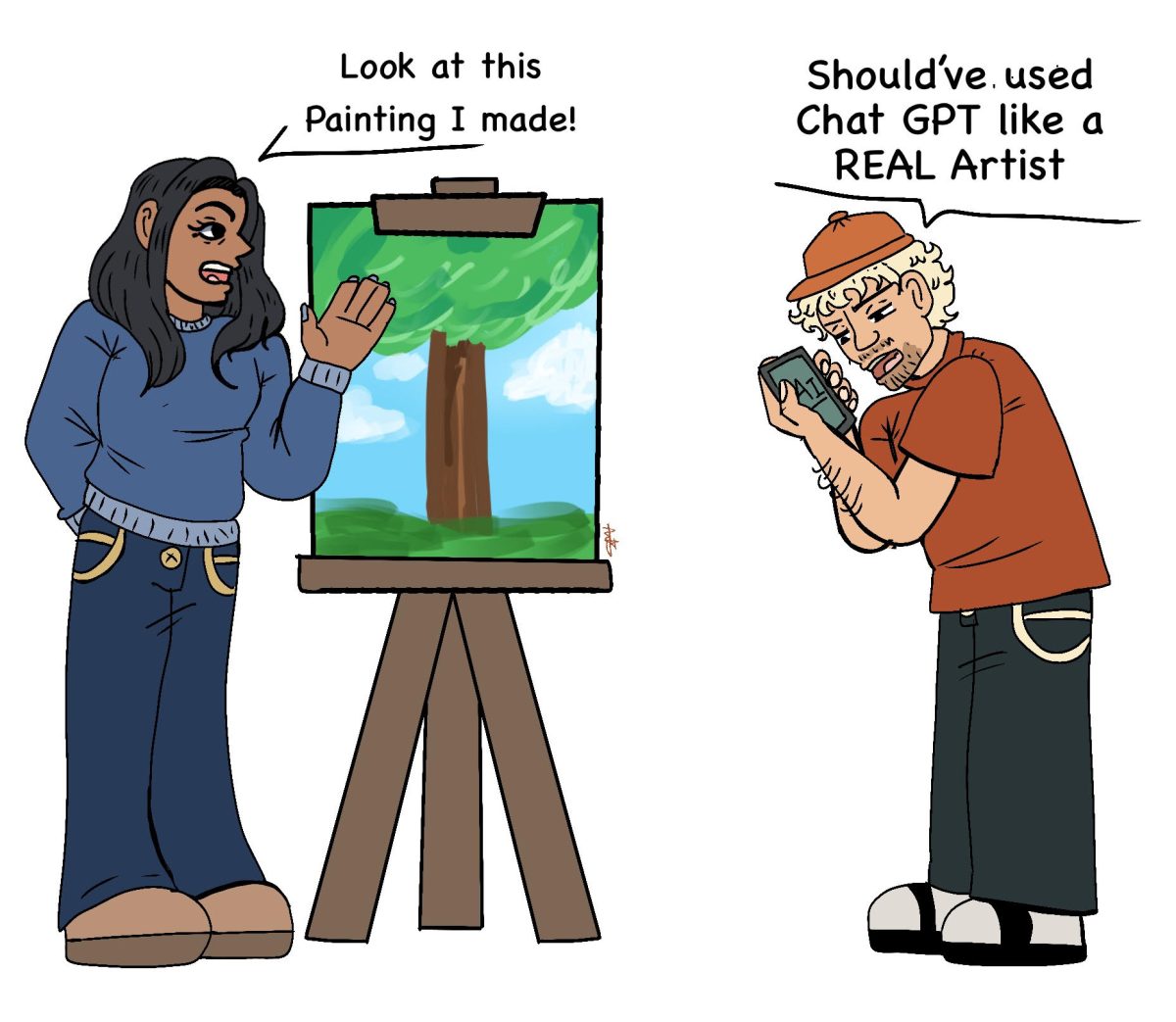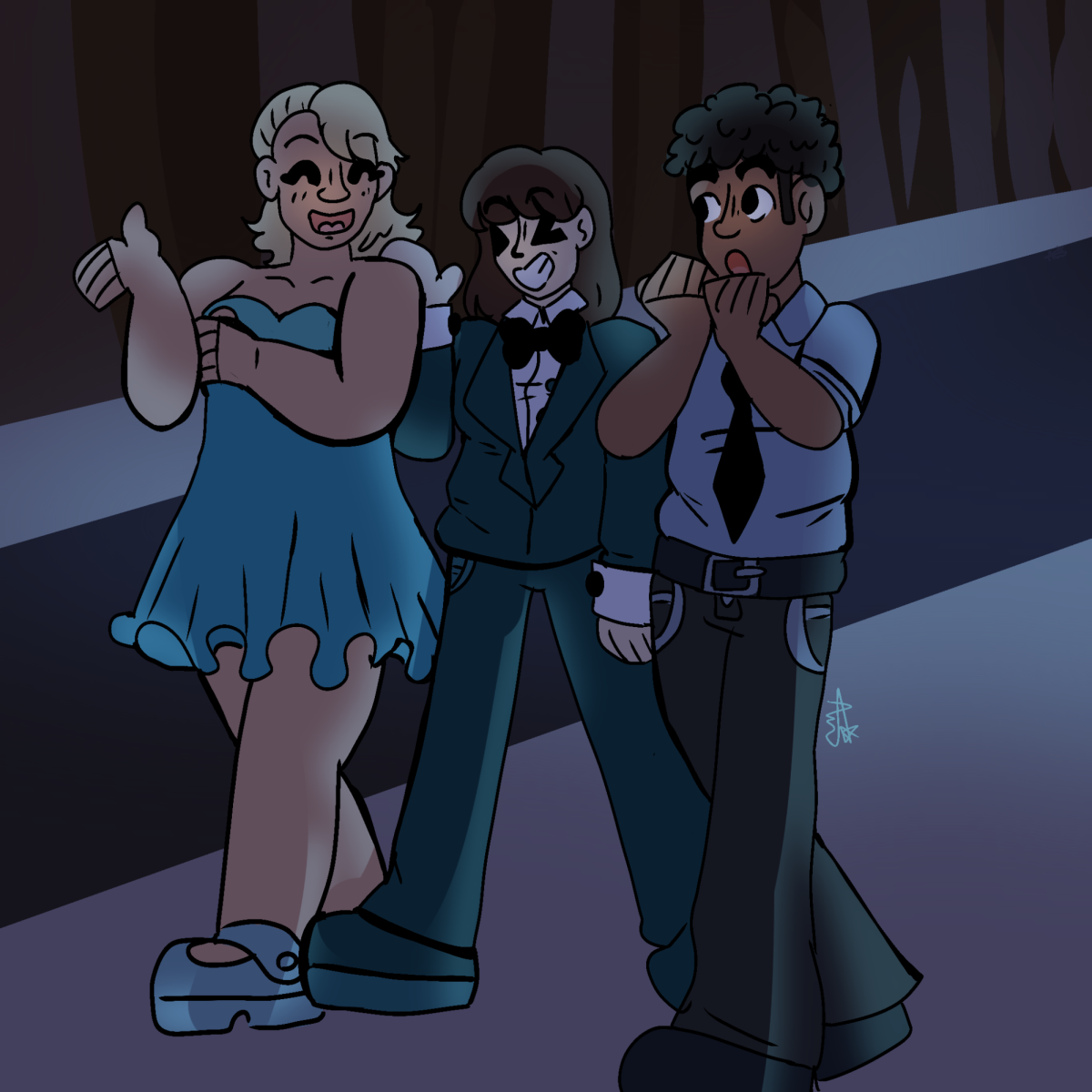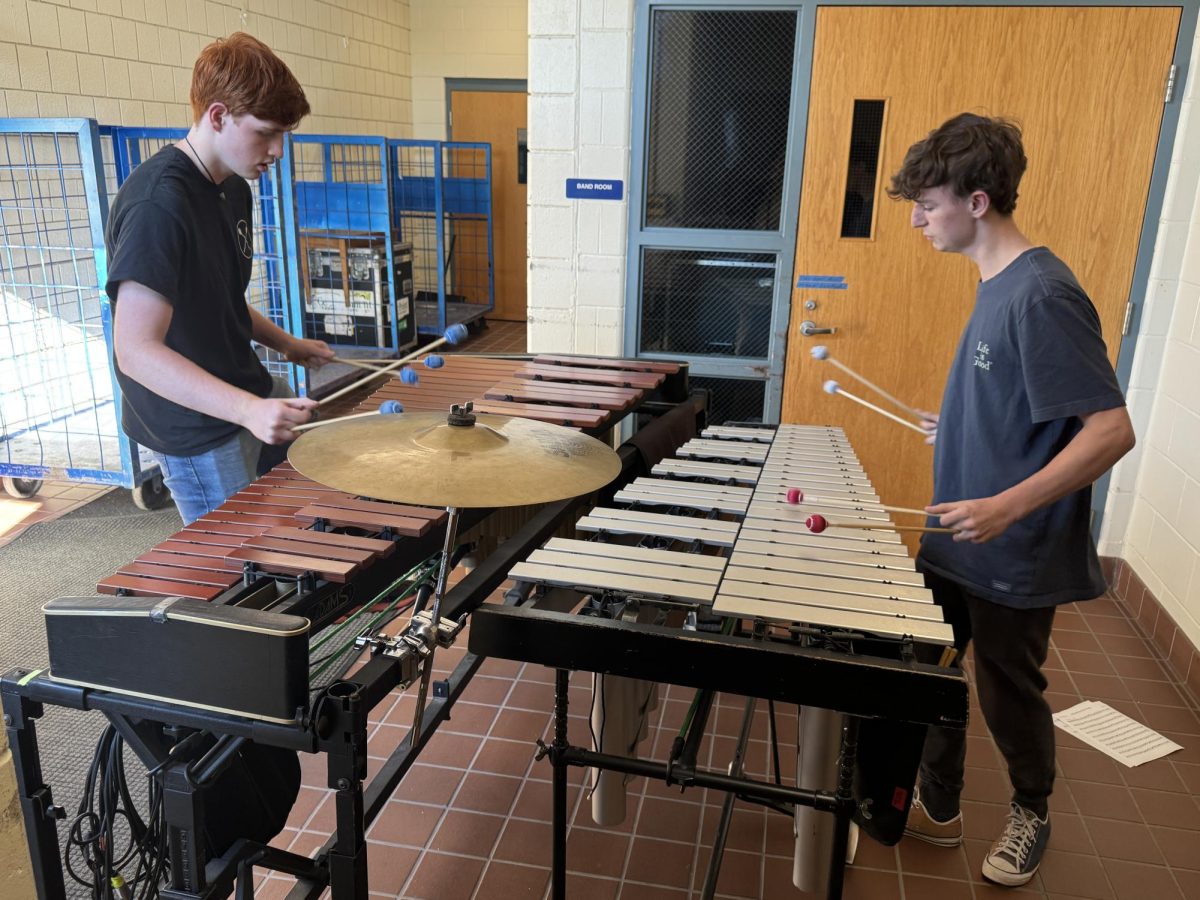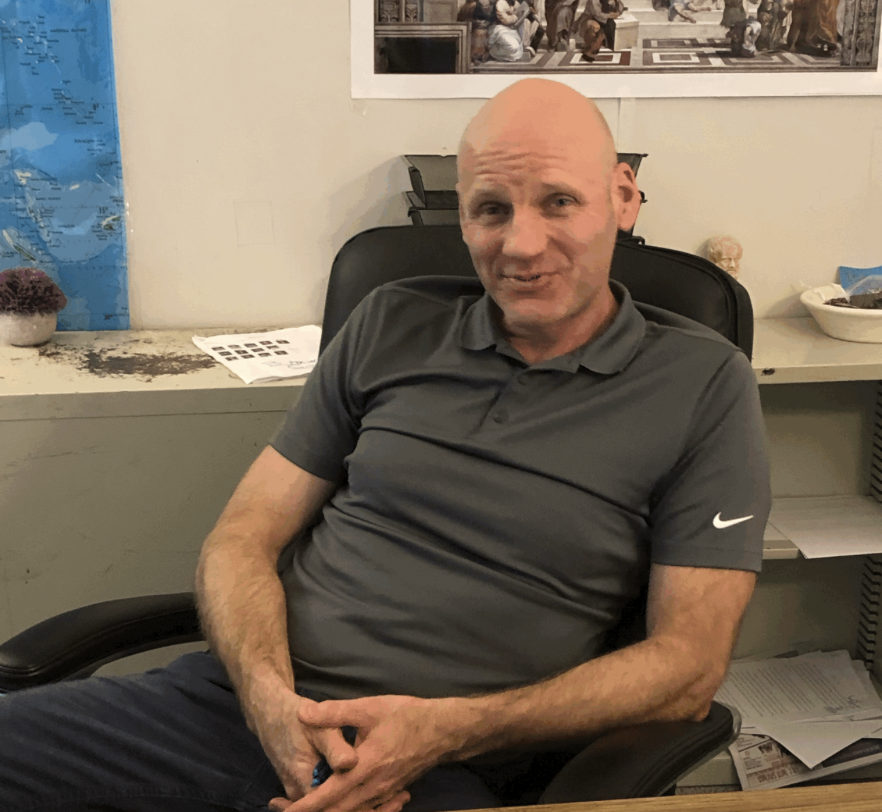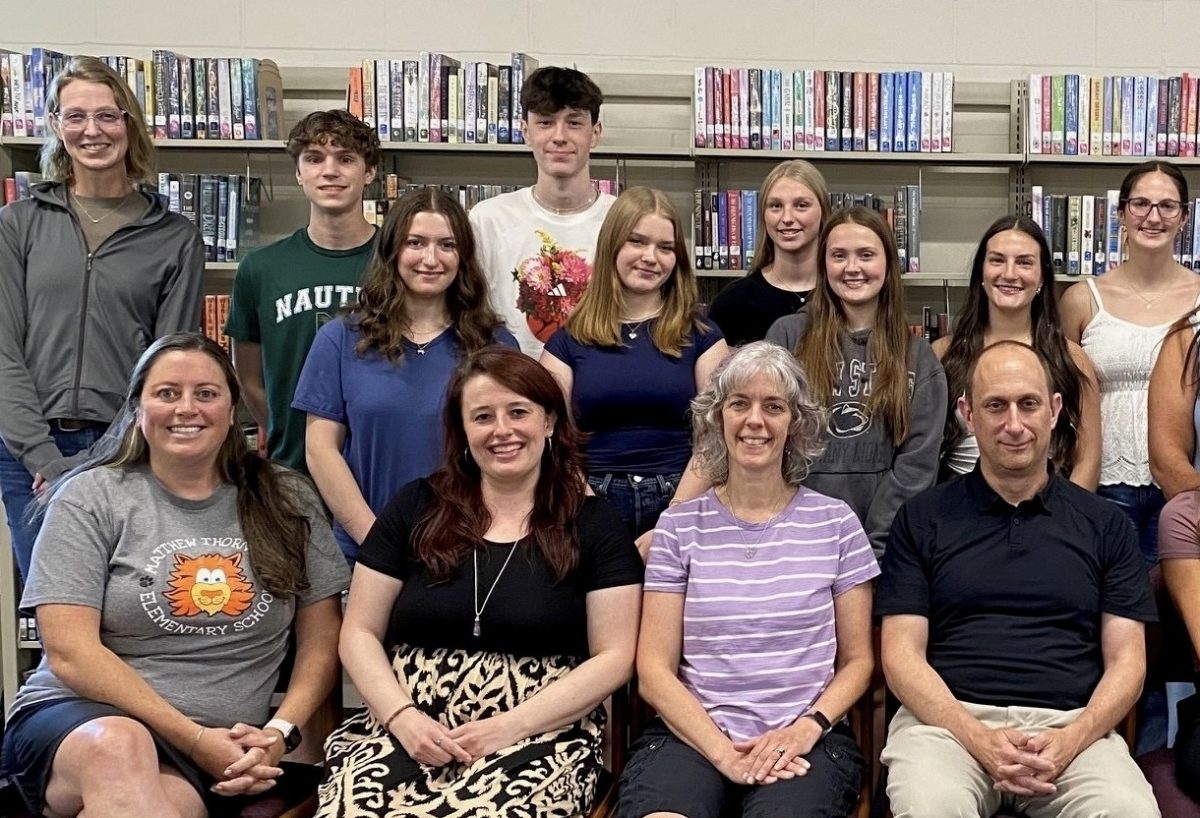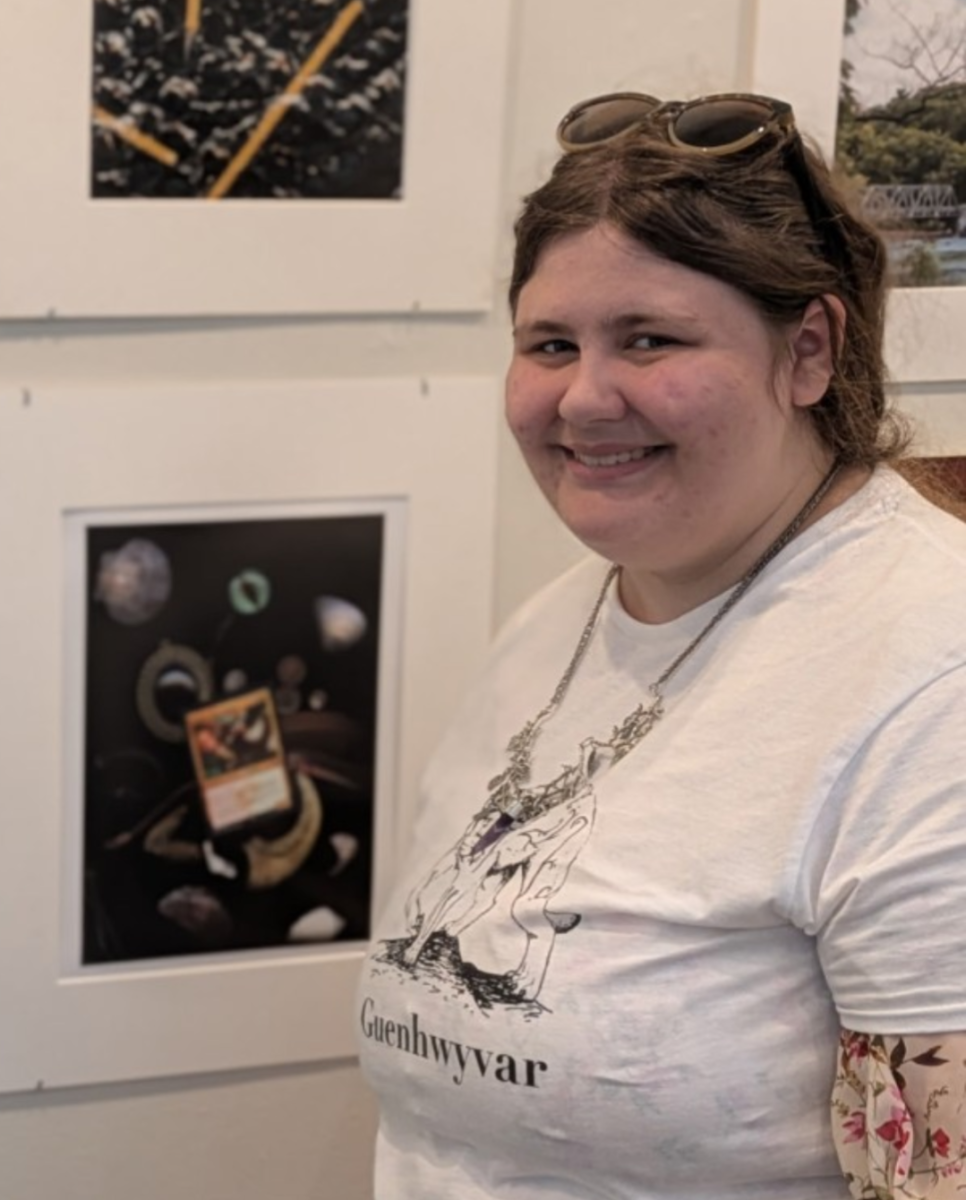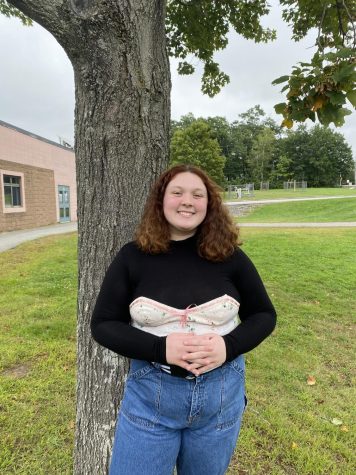The day starts with honors English. When that’s finished, I jump right onto reading class and start sounding out my new vocab words of the week. After geometry, the hard classes start. Math enrichment begins and it’s onto trying to count how many blue and red fish there are in the aquarium. With chemistry done at 2:24, I finish off the school day with making popsicle stick trees in art class.
Remote learning with a younger sibling has made me feel like I’m taking first grade all over again.
Between trying to find the symbolism in Edgar Allan Poe’s The Raven and learning the basics to the ABC’s, my schedule has become jam packed lately. It’s enough to give any high schooler whiplash between trying to learn the structure of an atom and making sure your younger sibling doesn’t go to second grade illiterate.
Since going remote back in March, I have been silently praying for these children to go back to school. After dragging my five-year-old brother through kindergarten, my prayers of going back to some normalcy were gladly answered when he went back to school this fall.
When I was enduring the tediousness of hybrid without having to worry about my brother, I thought my woes were coming to an end. Then the school district declared their schools would go remote from the end of November to the middle of January. Silly me really thought 2020’s reign of terror was over. Now, being halfway through remote learning with my little sibling I only have one opinion in this situation.
It sucks.
Remote learning is already hard for the average student, now add into the mix an overzealous, hyper six-year-old. It doesn’t paint the most serene picture.
So from the bottom of the hearts of every poor, miserable older sibling, send them back. Please. I can’t take it anymore.
I can see where the fear of sending children back to school can incite in any parent. I can agree that it’s a risk to send any child into a possible COVID-19 exposure.
Even though there is a risk, the chance of transmitting within the school environment is extremely low. Transmission between children under the age of eighteen is very small; they only take up 12.3% of all COVID-19 cases in the United States (American Academy of Pediatrics).
If one member of the student body contracts the virus, severe illnesses among children under the age of eighteen is extremely rare. Only 1.1% of COVID-19 positive children result in hospitalizations (American Academy of Pediatrics).
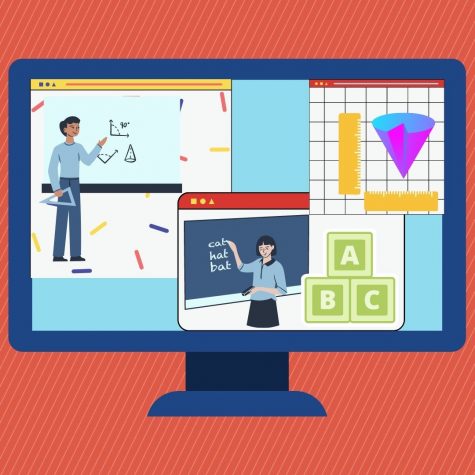
Despite these facts, parents are still nervous. This is completely understandable, since nobody wants their kid to become sick. In that scenario, the parent/guardian would be at fault for allowing the child to get sick in the first place.
To convince the most nervous parents, child mortality rates are lowest at 0.0-0.21% of all deaths relating to COVID-19 in the United States (American Academy of Pediatrics).
And even if that doesn’t convince you as a parent, there is an even better option for you and your child. Keep them remote.
If you want your child to be absolutely safe, the state provides a free homeschooling experience through Vlacs. Vlacs provides K-12 services that would provide all that’s needed for your child (Vlacs).
I personally would be fine with continuing remote learning on my own. But I beg of you, send the elementary kids back. Not only do they need social interaction, but I need a break. If I have to go try to find my brother’s specific rainbow pencil for the fifth time that day I might go berserk.
It’s not just siblings that are forced to become teachers on the fly. Essential worker parents are put out to dry by remote learning as well.
Parents who don’t have an older sibling on stand-by, or a caregiver for their child are left with trying to keep their child afloat and keeping a roof over their heads.
My sanity is at risk, and it’s not because of having to quarantine from my friends and family, it’s from trying to explain why the letter ‘W’ makes the same sounds as how you say the letter ‘Y’.




